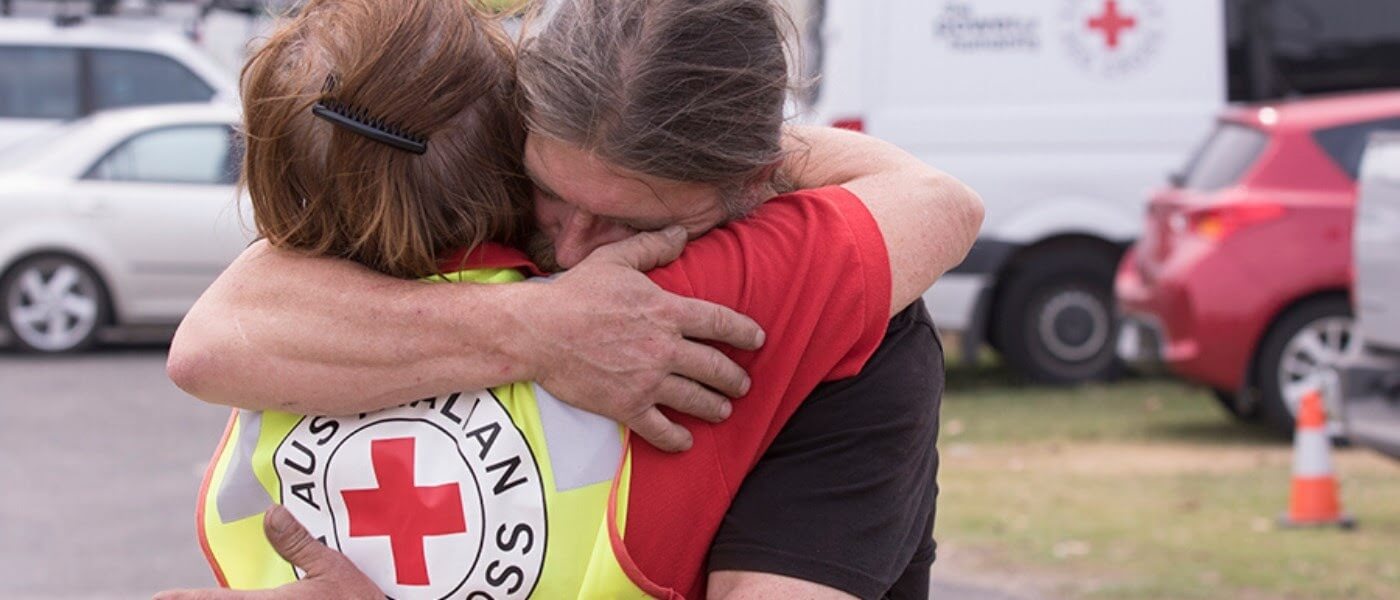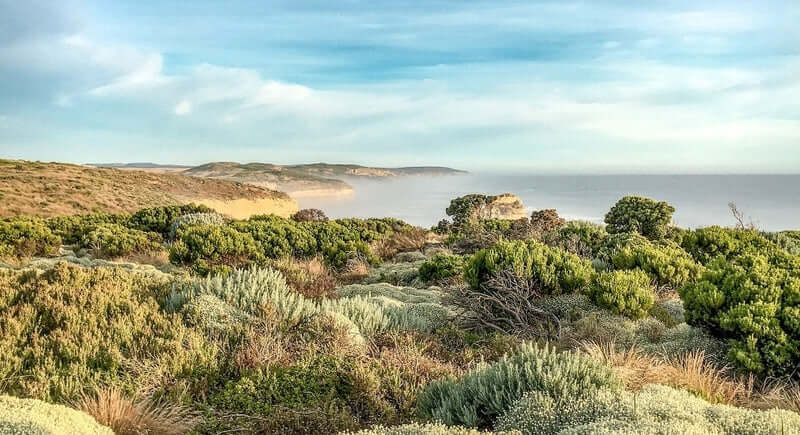Scaling disaster recovery, as disasters scale.
Australian Red Cross champion Cards for Calamity for their nationwide response to support people affected by the 18 million hectares of bushfires during the 2019/2020 season. Knowing the power of the cards, Australian Red Cross purchased 6000 Cards for Calamity packs as a key resource for their recovery teams across Australia in the face of compounding crisis.
“People around the globe often have a shared experience of disasters and recovery. Being able to read a card written by someone who is 12 months, or two years ahead of me helps me know that what I’m feeling right now is quite normal—it fast-tracks the process because you don’t need to re-learn what other people have already learned.”
Jessica, Australian Red Cross Recovery Officer

Recurring disasters across Australia
Every year, bushfires threaten lives, damage homes and livelihoods. Following bushfires, communities in Australia are left facing a long, often complicated and exhausting road ahead as they work to rebuild their lives—ultimately having to embrace a future that is different from what they had imagined.
Australian Red Cross has been at the forefront of the bushfire response for nearly four decades, working alongside emergency responders and recovery workers to both respond to and help communities recover from the impact of these disasters.

In the 2019-20 bushfire season alone, a series of fires severely damaged over 18 million hectares of land in Australia, affecting thousands of people and communities. With disasters increasing in severity and frequency, this is a huge task for any agency or organisation supporting communities in the wake of these events.

In addition to supporting people at evacuation and relief centres during bushfires, recovery officers and trained volunteers across Australia continue to work with individuals and communities to cope with the aftermath of these events and access the necessary support required to help each other and strengthen connections within the community.
“From one affected person to another affected person—Cards for Calamity is like someone speaking to you in your moment of need. They’ve been there and want to help you, and it feels like a beautiful gift that helps so much with your situation.”
A member of the Red Cross Recovery Team
Better tools needed to support recovery
With the unprecedented Black Summer fire season, floods, drought, and COVID-19 pandemic, Australian Red Cross needed innovative ways to ‘support the supporters’ as well extend their ability to support disaster-affected communities. With this in mind, they joined forces with Disastrous to address the stress, uncertainty, pain and disruption caused by these layered disasters.

Disastrous's Cards for Calamity distil decades of recovery knowledge and cognitive science into an easy-to-use tool to support life-changing decisions in the days, weeks, months and years after a disaster.
The 70 cards include tales, tips and tricks for life after a disaster. They have enormous flexibility—the cards can be used to support an individual or family’s private recovery journey, or as a creative tool to spark collective recovery conversations in groups, either online or in person.
Knowing the power of the cards, Australian Red Cross purchased 6000 Cards for Calamity packs as a key resource for their recovery teams across Australia.
‘It was like a revelation’
As a Recovery Officer in Victoria, Jessica runs community workshops to both support the supporters and reach groups of affected people to help them prepare for bushfires and other disasters.
In these workshops Jessica often hands each participant a single card from the Cards for Calamity deck. Participants work in pairs and discuss what comes up when they read the card. They are given a chance to read their card to the group and speak to their personal experience of recovery.
In one particular session, Jessica was working with a heavily smoke-affected community in northeastern Victoria. At the start of the workshop there was an older gentleman sitting in the back of the room, up against the wall and away from the group.
Jessica recalls that his wife had told him to go to the workshop. He looked really uncomfortable about being there, fullstop, let alone reading his card in front of the group.
But when he got up, he spoke about how this particular card really resonated with him and made him think deeply about things that had happened to him during the course of his recovery.
She says she gets this a lot in her workshops when she uses Cards for Calamity. The cards really strike a chord with people—men, women, and children alike.

Creating space for incredible conversations
Recovery workers across Australia are using Cards for Calamity to engage in important conversations with each other, educators, individuals and groups of people. Here are a few examples of how the cards have been used so far:
- An icebreaker at the beginning of a group session. For example, one group was severely affected by repeated natural disasters and following the icebreaker the conversation had a flavour of after everything we’ve been through—we can cope with anything.
- Working one-on-one with leaders. The Are you being too hard on yourself/others? card has been used to help individuals find strength in vulnerability.
- Working with groups who don’t think they are recovering, and helping them to see the ‘slump’ they are feeling as an expected part of the road to recovery. The How some people describe their recovery journey card has been to help people regain hope that recovery is not only possible, but likely.
- Addressing ‘survivor guilt’. The Death from a disaster is different card has been used to communicate why it’s important to demonstrate empathy and walk alongside others.
- Trauma support and self-care. For example, in a group of early childhood educators, each participant selects a card to read out loud and reflect on what it means for them.
- Reaching remote communities. Cards have been put up on local notice boards or read out over emergency radio stations for broad community outreach. Decks of cards are handed out to disaster-affected families and individuals.
- Supporting financial conversations. Financial counsellors use the cards to prepare for and facilitate meetings with bushfire-affected clients.
An easy conversation-starter
Linda is a Recovery Officer who has used Cards for Calamity with two bushfire-impacted populations in South Australia.
In the Yorke Peninsula, she used the Cards for Calamity with the Walk and Talk group, where parents drop their kids off at school and go for a walk together followed by coffee and a chance to talk.
Linda introduced Cards for Calamity to the parents, knowing that people can often feel overwhelmed by the duration and magnitude of the challenges they face post-disaster, and they worry a great deal about their children. The cards started great conversations about the parents’ experiences in bushfires and how they can support their families.
In the town of Keilira, Linda also left the cards on a table at a weekly barbeque of fire-impacted families. The women in the group gravitated to the cards, leading to a meaningful, hour-long conversation and sharing of personal experiences.
These social connections are vital to an individual’s recovery—helping them problem solve, support one another, and, ultimately, feel less alone.
Linda says that the cards have been really impactful in starting conversations where people can share what they are experiencing, create connection, and feel heard.
Scaling disaster recovery, as disasters scale.
Seeing this kind of valuable work being facilitated with Cards for Calamity is what Elizabeth McNaughton and Jolie Wills sought to achieve when creating Disastrous.
We’re here to deal those impacted by disaster a better hand—one that’s packed with experience, backed by science, and ready to distribute at scale to those impacted by disaster.
Seeing this work come to life across Australia really drives home what Disastrous is all about—having the world’s best advice accessible to you in life’s hardest moments.
Building health and wellbeing beyond recovery
Australian Red Cross has recently expanded its partnership with Disastrous to include the Doing Well cards. They are using these cards to support their own teams as they manage increasingly complex workloads and face the risk of burn-out in their own lives.
The Doing Well cards are also backed by science and share tips and tricks to look after ourselves and others, either in times of acute stress or as we manage the day-to-day challenges that come our way.

“Our people are working in some very complex and challenging environments. We know that if we don’t look after our people, they can’t do their best work. The Doing Well cards are a great boost. They are effective, simple to use, and it’s one way our staff and volunteers know we are supporting them to support others.”
Dr Kate Brady, National Disaster Recovery Advisor




Leave a comment
This site is protected by hCaptcha and the hCaptcha Privacy Policy and Terms of Service apply.